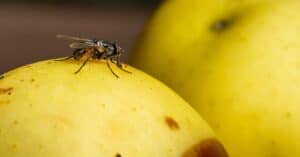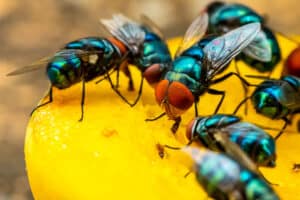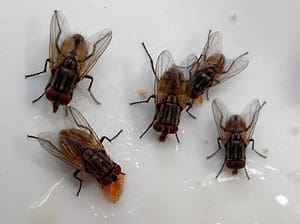Drain flies are those pesky flies are always hanging around your outside drains. Although not usually harmful, they can be an annoyance, especially if they then find their way into your home through an open window or door. However, as annoying as the adults themselves are, their larvae are even more unpleasant, literally living in the drain sewage and feeding on the waste debris there. So, in this article, we’ll help you to identify drain fly larva and give you some tips on how to quickly get rid of them!
What are Drain Flies?
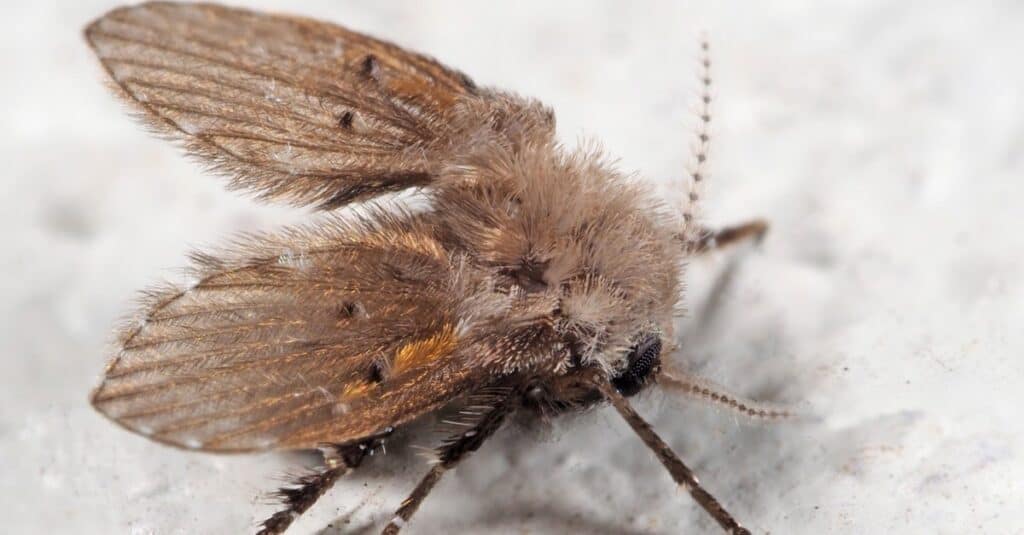
Drain flies can be distinguished by their hairy body and wings.
©Cherdchai Chaivimol/Shutterstock.com
Drain flies are are members of the Psychodidae family group. There are approximately 2,600 species of them worldwide which makes them one of the largest groups of true flies. They are very small at around only one-eighth of an inch long, and are typically dark brown or black. Drain flies are also sometimes called “moth flies” because of their hairy bodies and wings. Their wings are large and oval-shaped. However, they are weak fliers, despite the size of their wings.
Drain flies need moisture to develop and, as their name suggests, they typically inhabit areas where there is a source of water. The most common site is areas of standing water, such as drains. However, water left in buckets or lesser used toilets are also potential breeding sites. These moist areas provide the perfect place for drain flies to lay their eggs.
What Do Drain Fly Larva Look Like?
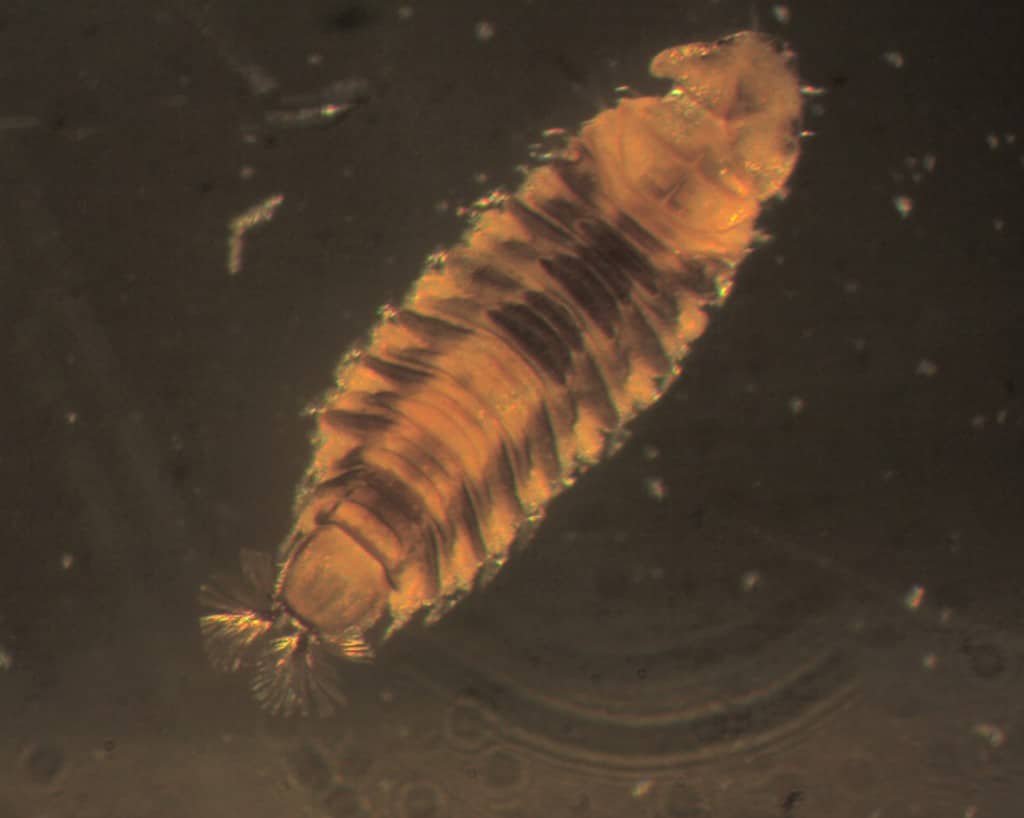
Drain fly larva have 11 body segments and a breathing tube at the posterior end.
As with all flies, drain flies begin as eggs before they transition to larva. Drain flies lay their eggs in moist decomposing organic matter, such as what can be found in drains. However, other suitable surfaces include manure, compost heaps, rotten food, and sewage waste. Drain flies typically lay between 30 and 100 eggs and they hatch between 30 and 48 hours later, depending on the temperature.
The drain fly eggs hatch into larvae – also known as maggots. The larvae are tiny and are usually only between four and 10 mm long. They do not have legs and have 11 body segments which are called annuli. Drain fly larvae breathe using a breathing tube which is located at the rear end. They are usually dark brown at each end, with paler centers. Drain flies remain in this larval stage for around 15 days, although they may can develop quicker in warmer temperatures, and slower in cooler temperatures. They typically feed on the same organic matter which they have hatched on. However, they will also eat fungi, algae, and other small micro-organisms which are in the same location.
Following the larval stage, the pupae stage commences. However, this stage only lasts for between 24 and 48 hours, after which they emerge as adult drain flies. The lifespan of an adult drain fly varies, with males only living for a few days and females that have not laid eggs living for around seven days.
How to Get Rid of Drain Fly Larva
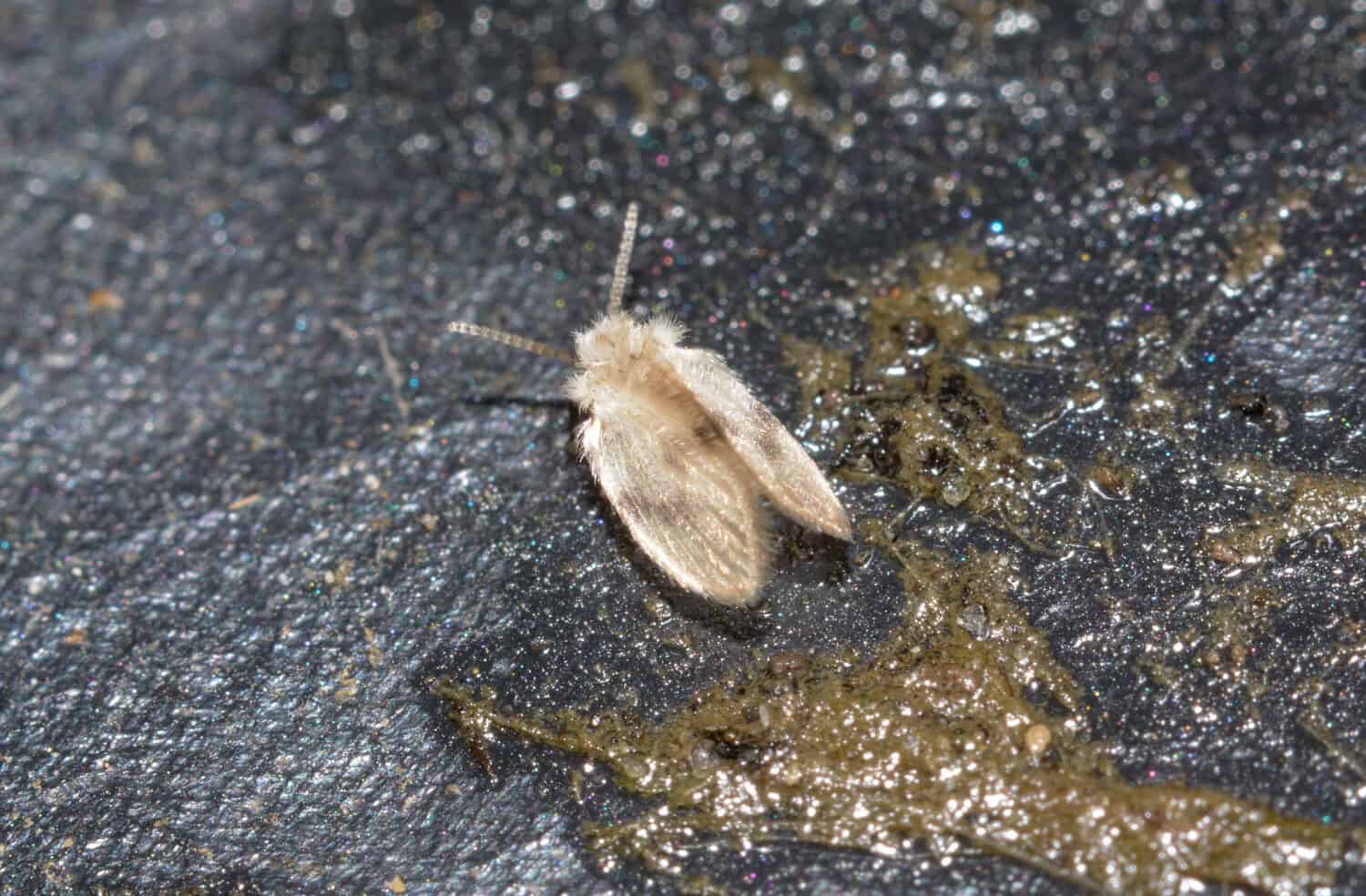
Cleaning the drains is the first step to removing drain flies.
©Muddy knees/Shutterstock.com
No one wants drain flies hanging around their home. Luckily, there are a few things that you can do to get rid of them and their larva quickly. However, as the old adage goes: “prevention is better than a cure”, so eliminating the things that attract them is the first step to being free from drain flies. This means that you should eliminate any areas of standing water first, including fixing any leaks or dripping faucets. This is a major step as it can prevent drain flies from reproducing near your home as you’re essentially removing the thing that attracts them the most.
The next step to take is to clean the drains and nearby pipes, including any build up of debris which may have caused it to become clogged. Again, this will help to prevent drain flies from laying their eggs there in the first place. A good tip for cleaning your drain is to use a solution of baking soda and vinegar along with a strong brush to clean out as much of the debris and grime that has built up there as possible.
However, if you have an existing infestation of drain flies then an effective way to eliminate both adults and larvae is to use natural insecticides. Natural insecticides are a good alternative to chemical insecticides and are much safer to use around children and pets. Solutions using items such as essential oils or soap are suitable to use as natural insecticides.
Unfortunately, sometimes infestations may persist, and if this happens then it may be time to call in the professionals. A professional pest control agency will be able to swiftly deal with the problem so that you don’t have to.
The photo featured at the top of this post is © Cherdchai Chaivimol/Shutterstock.com
Thank you for reading! Have some feedback for us? Contact the AZ Animals editorial team.



